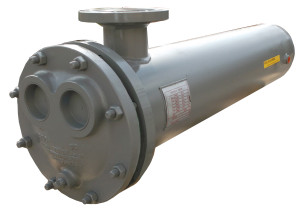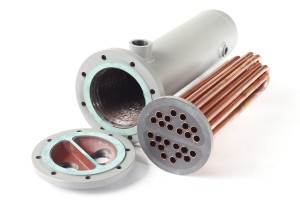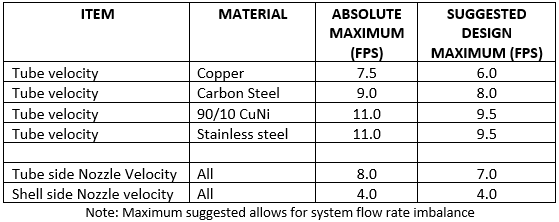 Shell and Tube heat exchangers are often used in institutional steam-to-water heating applications. We recently received a call from a consulting engineer asking what the minimum flow rate should be in a Bell and Gossett SU heat exchanger applied to a variable volume, variable speed system. The question was asked due to a concern about laminar velocities in the tubes causing the steam valve to start cycling.
Shell and Tube heat exchangers are often used in institutional steam-to-water heating applications. We recently received a call from a consulting engineer asking what the minimum flow rate should be in a Bell and Gossett SU heat exchanger applied to a variable volume, variable speed system. The question was asked due to a concern about laminar velocities in the tubes causing the steam valve to start cycling.
Maximum Velocities in Heat Exchangers
Let’s start by reviewing the recommended velocities in shell and tube heat exchangers in an HVAC heating application. The maximum velocity in the tubes is a function of several factors, including the tube material, the opening sizes, and the liquid type.
The majority of heat exchangers in this application have copper tubes and use water as the heated liquid. The actual maximum velocity for this application varies with heat exchanger diameter and nozzle opening sizes. Some copper tube selections may have maximum velocities as high as 7.5 feet per second (FPS) while others have a maximum as low as 6.5 FPS. Stainless steel and Cupro-Nickle (CuNi) velocities may go as high as 11 FPS. The maximum tube side nozzle velocity should be 8 FPS.
What’s the concern if you exceed the maximum recommended velocity? When the manufacturer’s maximum is exceeded, you may experience a significantly shortened tube bundle life. The failure would be caused by erosion of the tube material, damage to the mechanical joint where the tubes are attached to the tube sheet, or vibration damage due to excessive velocity at the tube bend.
I have traditionally suggested that standard specifications for Bell and Gossett SU heat exchangers with copper tubes contain a maximum velocity of 6.0 FPS. This allows a safety factor for imbalance in the system. It also allows for system curve area changes in the case of a variable speed, variable volume system. This suggestion can change with specific applications and with tube material changes.
Here’s a maximum velocity table for HVAC B&G shell and tube heat exchangers.



